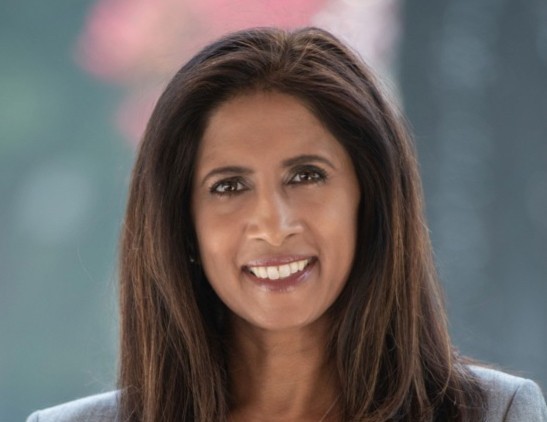A year after buying the UK subsidiary of the bankrupt US lender, HSBC is building out a business of lending to startups and venture capitalists in the US.

Sunita Patel, head of venture coverage and business development, Innovation Banking – HSBC USA Commercial Banking
It is a year since the collapse of Silicon Valley Bank (SVB) and Sunita Patel, head of venture coverage at HSBC USA Commercial Banking, still finds it hard to comprehend how the 40-year-old lender to startups was wiped out within 24 hours following a bank run.
“I don’t think I have ever had the time to actually process what happened,” says Patel, who was chief business development officer at SVB at the time of the collapse.
Almost as fast as the bankruptcy came the sale of Silicon Valley Bank’s UK subsidiary to global banking group HSBC. It swooped in to buy the UK operations for £1 on March 13, 2023, just days after SVB’s collapse. It also acquired SVB’s banking teams in Israel and Hong Kong.
The UK-headquartered bank, traditionally a lender to late-stage startups, saw an opportunity to expand into early-stage startup financing that SVB specialised in. But it faced a challenge.
Although it had bought the other assets, SVB’s core US operations were bought by First Citizens Bancshares, a North Carolina-based bank, leaving HSBC without a critical presence in the centre of the US’s startup sector of Silicon Valley.
HSBC hired Patel and several other staff from SVB to help it build out the US startup lending operations. HSBC is hoping to build the kind of brand that SVB had among the US startup community. Before its collapse SVB had been a well-liked lender for its customer service and willingness to lend to startups that couldn’t find financing elsewhere. Replicating that, while quelling the unease caused by the bank collapse was always going to be a tough challenge.
The differences between HBSC and SVB couldn’t be starker. SVB was a local bank based in Silicon Valley. HSBC is one of the world’s largest financial institutions, with branches in 62 countries. But, despite its global reach, it is not well known in the US.
“We are actually doing the opposite of what most banks do. Most banks build domestically here in the US and then try to build internationally. We’re an international-first bank and now we’re having to build that brand that HSBC has internationally in the US,” says Patel.
Patel is personally well placed to do this kind of brand building. She first worked at SVB between 1992 and 1997 when the lender was still growing its reputation. She worked for Comerica Bank, a US regional commercial bank, for 23 years before returning to SVB in 2020.
Although early-stage startup lending is a new business line for HSBC, the fact it is a well-established bank with existing lending processes makes it easier than building from scratch, says Patel.
“This is a long-standing institution that already has a lot of processes that are very much global in nature,” she says.
HSBC is still building out its US early-stage startup lending operations. Among its business lines are venture debt and term loans lending. It plans to establish a warehouse financing unit that allows companies to borrow money secured by their inventories. It is creating a business line to lend to general partners of venture funds. It also has a corporate venture capital arm, HSBC Ventures.
“We are building up in every sense to make sure that we’re accommodating our clients for all their needs, similar to what we had prior to the collapse.”
Sunita Patel, head of venture coverage at HSBC USA Commercial Banking
“We are building up in every sense to make sure that we’re accommodating our clients for all their needs, similar to what we had prior to the collapse,” says Patel.
She is cognisant of the hesitancy that startups will have banking with a large financial institution. She says she heard about the frustration that SVB clients experienced after they gravitated to other larger lenders. “The majority went to other big banks. And within a few weeks we started hearing the frustration over their service, because the one thing that SVB was so good at was serving clients,” says Patel.
Making sure startup clients don’t get lost in the bureaucracy of a big bank like HSBC is “core to the foundation of what we’re building,” says Patel. The lending team is ringfencing its customer service model so that clients have “that real special service model feel of a small bank where they’re getting the attention of an individual versus an 800 number.”
One standout advantage of HSBC is its global network, a particular benefit to startups that want to expand globally early on. SVB had only a handful of branches globally.
“To be able to serve startups on a platform in 62 countries was for us one of the huge value propositions of what HSBC was going to offer the innovation ecosystem,” she says.
In today’s high interest rate environment, big banks have the advantage of pulling in clients that are concerned about the financial stability of smaller, regional banks. Although SVB’s client service model was attractive to startups, its overexposure to US treasuries, the valuation of which fell as interest rates rose last year, exposed the vulnerabilities of small banks that are less diversified than the larger banks.
However, startups are likely to be hampered by more restrictive lending criteria of larger banks. Small business loans have been on the decline since 2023.
HSBC’s large size means “we can take probably more risk because we have the strength of a big balance sheet,” says Patel. “There is definitely a lot of appetite. HSBC knows the risk. This is a portfolio of higher risk than your traditional middle market portfolio, and they [HSBC] are aware of that.”
The biggest challenge is startups’ perception that HSBC is a lender they can bank with. “The service model was something that obviously stood out at SVB and having that was key to success. When we started to build, it was really important that we didn’t lose that,” she says.










